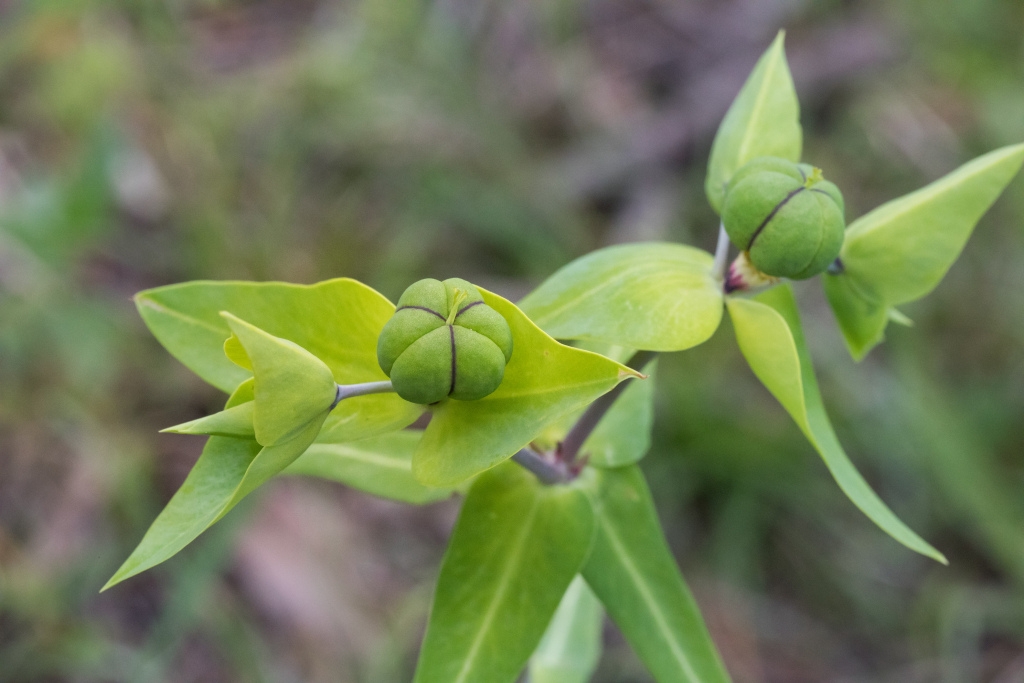Euphorbia lathyris
L. Caper SpurgeErect biennial herb 50–150 cm high, glabrous, more or less glaucous; stems solitary, often with a few sterile branches at base and numerous fertile branches from upper axils. Cauline leaves sessile, opposite, decussate, linear to oblong-lanceolate, 2–15 cm long, 5–25 mm wide, apex acute to obtuse, base sometimes slightly cordate, margins entire; leaves on fertile branches triangular to ovate, to 6 cm long, 4 cm wide, base asymmetrically cordate. Cyathia solitary, in upper axils of fertile branches; peduncles to c. 1 mm long; involucre conical, c. 2.5 mm long; glands lunate, c. 2 mm long, with 2 clavate, horn-like appendages; female flowers with styles divided to middle into 2 filiform recurved stigmas. Capsule ellipsoid-globose, 9–13 mm long, 12–16 mm wide, ridged, smooth, spongy outside; seeds ovoid, 5–6 mm long, reticulate-rugulose, brown or grey, caruncle peltate, cup-like. Flowers Aug.–Jan.
GleP, VVP, VRiv, GipP, OtP, WaP, Gold, CVU, DunT, EGL, EGU, HSF, HNF, Strz, VAlp. Also naturalised Wa, SA, NSW, ACT, Tas. Native to Europe. Sometimes cultivated as an ornamental and widely naturalised.
The alternative spelling (lathyrus) of the epithet is an orthographic error corrected by Linnaeus in 1762.
Jeanes, J.A. (1999). Euphorbiaceae. In: Walsh, N.G.; Entwisle, T.J., Flora of Victoria Vol. 4, Cornaceae to Asteraceae, pp. 55–82. Inkata Press, Melbourne.
 Spinning
Spinning



